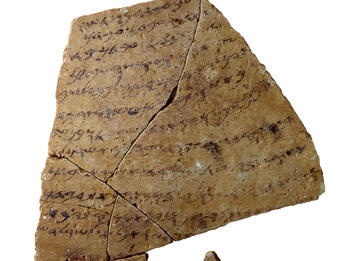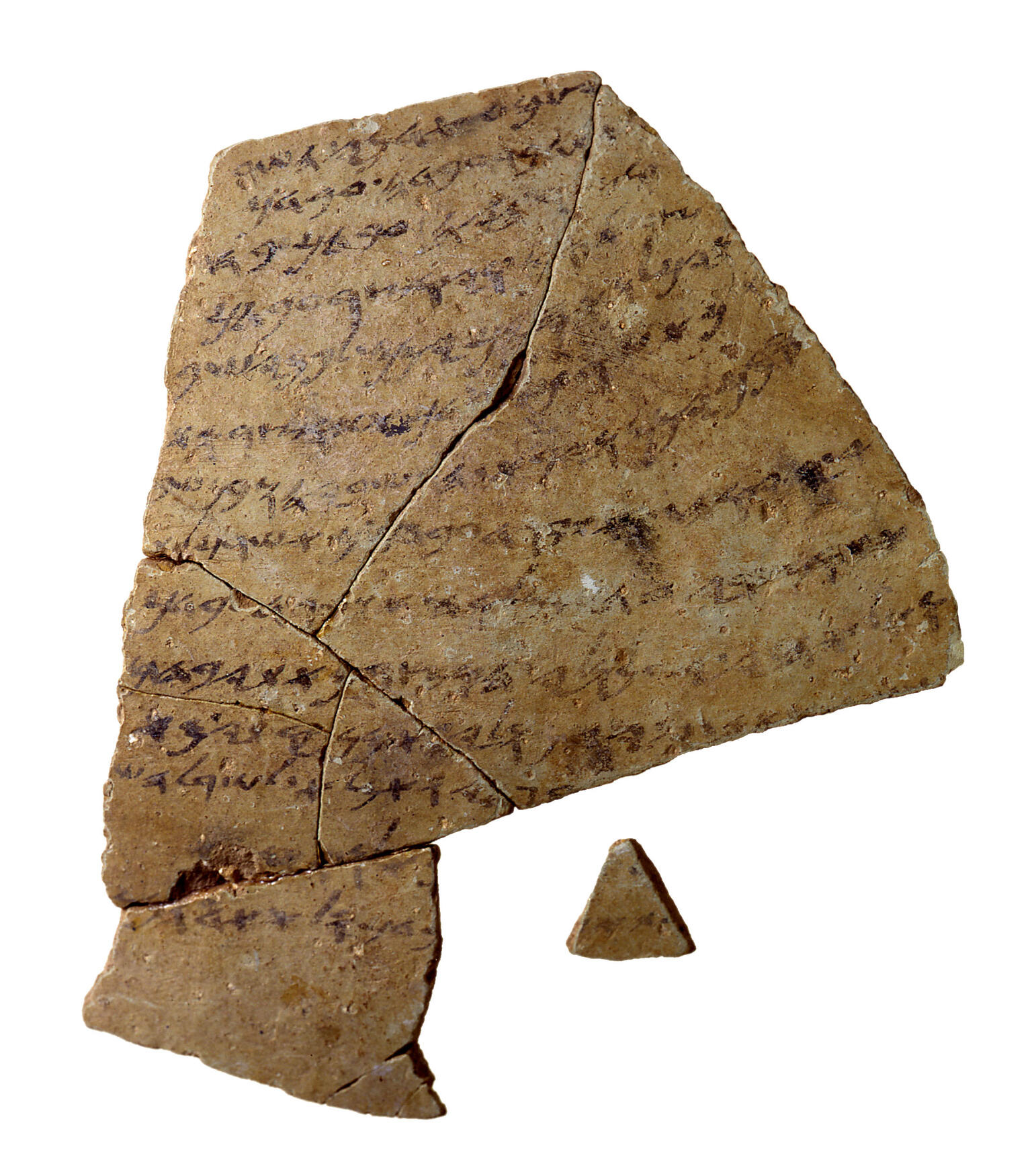A Legal Complaint
Late 7th Century BCE
Legal complaint on ostracon, Metsad Hashaviahu, Israel, from the late 7th century BCE. A worker states that a superior took his garment despite the laborer having fulfilled his work requirements. Biblical law places restrictions on taking garments as pledges, but Amos 2:8 describes violations in practice. Exodus and Deuteronomy warn against such mistreatment of debtors, stating that God will hear their cries. The text of this complaint can be read here.
Related Guide
The Ancient Near Eastern Background of Biblical Law
Biblical law was influenced by the legal collections of its powerful neighbors, especially the Babylonians and Assyrians.
Related Guide
Legal Materials from outside the Torah
The Hebrew Bible includes laws and references to laws in narrative contexts outside of the main legal collections of the Torah.
A complaint of mistreatment by a superior, written in Hebrew on an ostracon (a piece of broken pottery used to write on) from Metsad Hashaviahu (between Tel Aviv and Ashdod), from the last quarter of the seventh century BCE. This letter may not be simply an appeal for help, but rather a legal complaint, since it is reminiscent of the laws and practices in Exodus 22:25, Deuteronomy 24:10–13, and Amos 2:8, though the circumstances seem different. This is the only extrabiblical legal document found in Israel from before the Babylonian exile.
You may also like
Slave Sale





